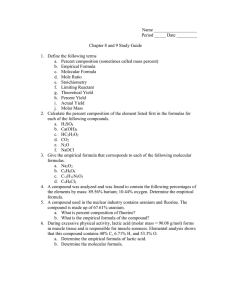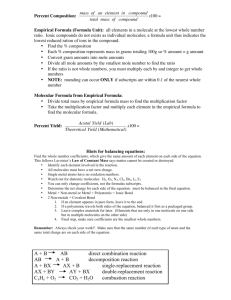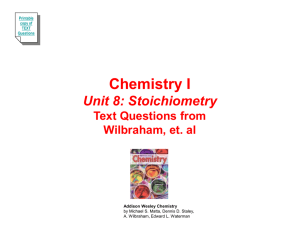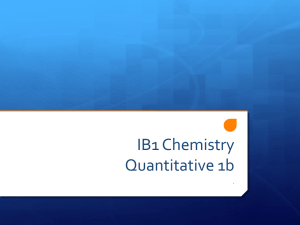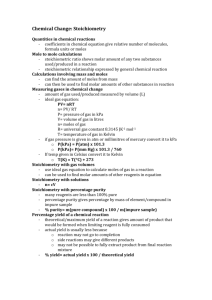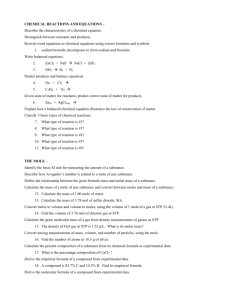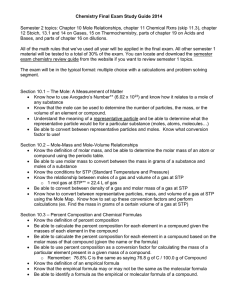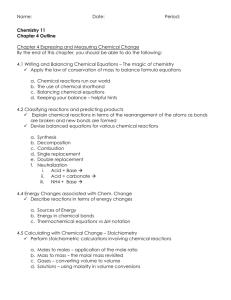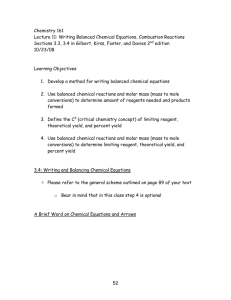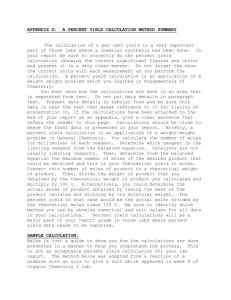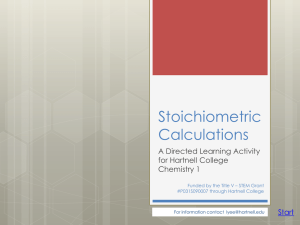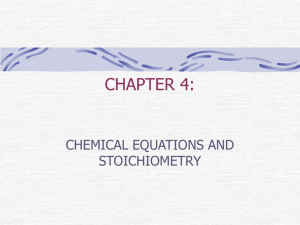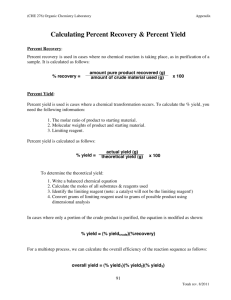Ch 10 & 12 SAO: Chemical Quantities & Stoichiometry
advertisement
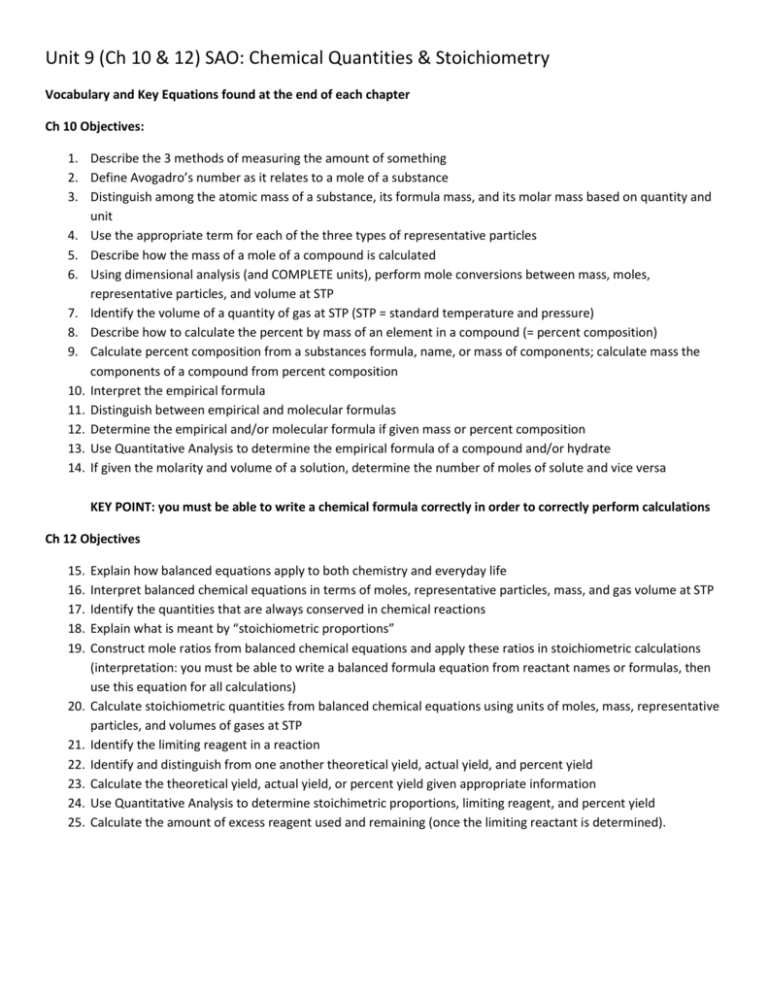
Unit 9 (Ch 10 & 12) SAO: Chemical Quantities & Stoichiometry Vocabulary and Key Equations found at the end of each chapter Ch 10 Objectives: 1. Describe the 3 methods of measuring the amount of something 2. Define Avogadro’s number as it relates to a mole of a substance 3. Distinguish among the atomic mass of a substance, its formula mass, and its molar mass based on quantity and unit 4. Use the appropriate term for each of the three types of representative particles 5. Describe how the mass of a mole of a compound is calculated 6. Using dimensional analysis (and COMPLETE units), perform mole conversions between mass, moles, representative particles, and volume at STP 7. Identify the volume of a quantity of gas at STP (STP = standard temperature and pressure) 8. Describe how to calculate the percent by mass of an element in a compound (= percent composition) 9. Calculate percent composition from a substances formula, name, or mass of components; calculate mass the components of a compound from percent composition 10. Interpret the empirical formula 11. Distinguish between empirical and molecular formulas 12. Determine the empirical and/or molecular formula if given mass or percent composition 13. Use Quantitative Analysis to determine the empirical formula of a compound and/or hydrate 14. If given the molarity and volume of a solution, determine the number of moles of solute and vice versa KEY POINT: you must be able to write a chemical formula correctly in order to correctly perform calculations Ch 12 Objectives 15. 16. 17. 18. 19. 20. 21. 22. 23. 24. 25. Explain how balanced equations apply to both chemistry and everyday life Interpret balanced chemical equations in terms of moles, representative particles, mass, and gas volume at STP Identify the quantities that are always conserved in chemical reactions Explain what is meant by “stoichiometric proportions” Construct mole ratios from balanced chemical equations and apply these ratios in stoichiometric calculations (interpretation: you must be able to write a balanced formula equation from reactant names or formulas, then use this equation for all calculations) Calculate stoichiometric quantities from balanced chemical equations using units of moles, mass, representative particles, and volumes of gases at STP Identify the limiting reagent in a reaction Identify and distinguish from one another theoretical yield, actual yield, and percent yield Calculate the theoretical yield, actual yield, or percent yield given appropriate information Use Quantitative Analysis to determine stoichimetric proportions, limiting reagent, and percent yield Calculate the amount of excess reagent used and remaining (once the limiting reactant is determined).
